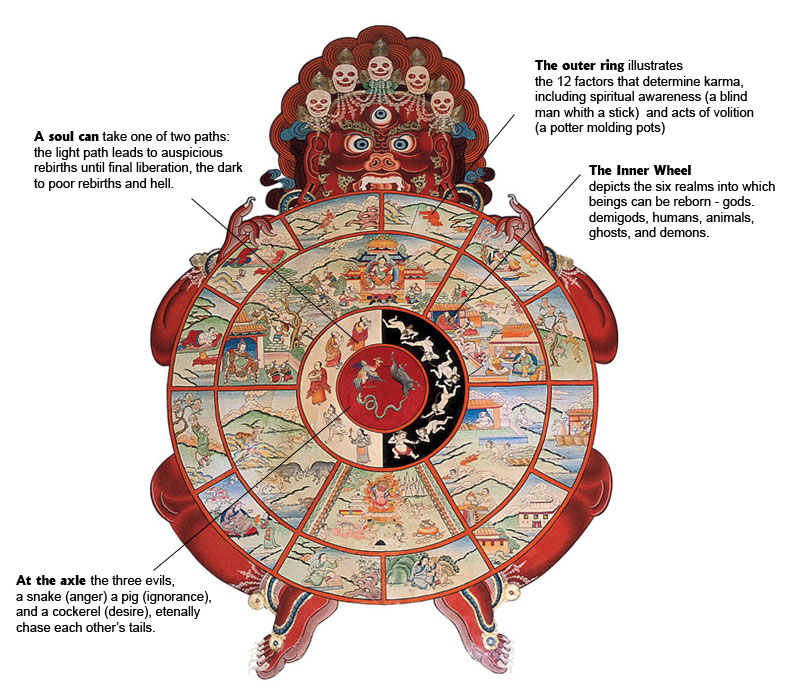
The mechanistic details of the Samsara doctrine vary within the Buddhist traditions. Buddhaghosa attempted to explain rebirth mechanism with "rebirth-linking consciousness" ( patisandhi). Later Buddhist scholars, such as the mid-1st millennium CE Pali scholar Buddhaghosa, suggested that the lack of a self or soul does not mean lack of continuity and the rebirth across different realms of birth – such as heavenly, human, animal, hellish and others – occurs in the same way that a flame is transferred from one candle to another. The early Buddhist texts suggest that Buddha faced a difficulty in explaining what is reborn and how rebirth occurs, after he innovated the concept that there is "no self" ( Anatta). This no-soul (no-self) doctrine is called the Anatta or Anatman in Buddhist texts. The Saṃsāra doctrine of Buddhism asserts that while beings undergo endless cycles of rebirth, there is no changeless soul that transmigrates from one lifetime to another - a view that distinguishes its Saṃsāra doctrine from that in Hinduism and Jainism.

Samsara and the notion of cyclic existence dates back to 800 BCE. the "blowing out" of the desires and the gaining of true insight into impermanence and non-self reality. Samsara continues until moksha is attained by means of insight and nirvana. It is perpetuated by one's avidya ("ignorance"), particularly about anicca (“impermanence”) and anatta, (“no-self”) and from craving. In each rebirth one is born and dies, to be reborn elsewhere in accordance with one's own karma. Every rebirth is temporary and impermanent. Samsara relates to the Four Noble Truths in Buddhism, as dukkha ("unsatisfactory," "painful") is the essence of Samsara. Samsara is characterized by dukkha ("unsatisfactory," "painful"). It is the never-ending repetitive cycle of birth and death, in six realms of reality ( gati, domains of existence), wandering from one life to another life with no particular direction or purpose. A beginning point is not evident, though beings hindered by ignorance and fettered by craving are transmigrating & wandering on". In several suttas of the Samyutta Nikaya's chapter XV in particular it's said "From an inconstruable beginning comes transmigration. In Buddhism, saṃsāra is the "suffering-laden, continuous cycle of life, death, and rebirth, without beginning or end". Samsara ends if a person attains nirvana, the "blowing out" of the desires and the gaining of true insight into impermanence and non-self reality. Rebirths occur in six realms of existence, namely three good realms (heavenly, demi-god, human) and three evil realms (animal, ghosts, hellish). Samsara is considered to be dukkha, suffering, and in general unsatisfactory and painful, perpetuated by desire and avidya (ignorance), and the resulting karma. Saṃsāra ( Sanskrit: संसार, Pali: saṃsāra also samsara) in Buddhism and Hinduism is the beginningless cycle of repeated birth, mundane existence and dying again. Translations ofĬycle of existence, endless rebirth, wheel of dharma, beginningless time

Medieval and contemporary texts typically describe six realms of reincarnation. A thangka showing the bhavacakra with the ancient five cyclic realms of saṃsāra in Buddhist cosmology.


 0 kommentar(er)
0 kommentar(er)
